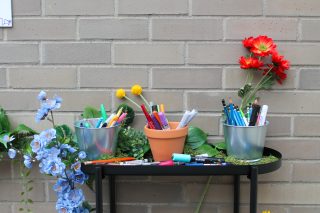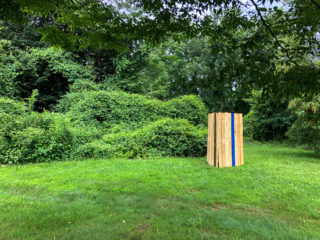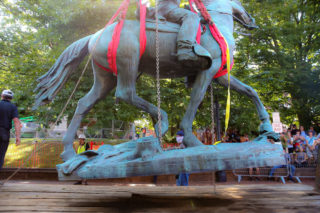
Near the end of October, the nonprofit French art center Spacejunk hosted a five day festival that brought art to the streets of Bayonne, a historic city belonging to the cultural region known as Basque Country, where the Nive and Adour rivers meet. Held as a celebration of their Bayonne art center’s 10 year anniversary, Spacejunk’s Points de Vue festival invited artists from around the world to create on the streets of Bayonne as a means of connecting the power of street art with the local community.
The festival was a community-wide collaboration: some murals feature portraits of local residents and many were inspired by Bayonne itself. Through stencil workshops, exhibition openings, artist talks, live music, street art tours via bike and more, Points de Vue’s Street Art Week invited everyone to forge their own point of view on street art, and its value and potential. We spoke with Alban Morlot, the director of Spacejunk Bayonne to learn how much work went into making Points de Vue possible.

Lindsey Davis: How long did it take to organize Points de Vue?
Alban Morlot: In practical terms a year, but before we even began the actual logistical planning I spent 6 years drafting and amending the proposal for the festival.
LD: How long have you been running Spacejunk Art Centers? When did you know it was time to move outdoors and commission work for public spaces?
AM: I’ve been working at Spacejunk since the art center’s beginnings in Bayonne in late 2004. (Spacejunk was originally founded in Grenoble, France in 2003 by Jerome Catz.) The public has been following our program for a long time but eventually the choice to host a festival became unavoidable.
Moreover, we display the work of international artists as part of our exhibitions and it’s been a real frustration to not be able to track or facilitate their works through the city. Now local authorities are more receptive to my suggestions.
LD: Why do you think the local authorities are more receptive to legal street art now?
AM: I think the movement has become more mature on the one hand and many efforts have been made by cultural actors on the other. Finding public and private funding goes through a long process of sensitizing our political decision-makers and business leaders to the history of street art and its recent evolution. Then, understanding the issues inherent by an event such as “Points de vue”, promotes a better reception from our political class.
I would add that the democratization of access to the Internet has largely contributed to this change of outlook on street art, as the renewal of generations who grew up with the emergence of hip hop culture in the 80s.
It is a conjunction of many factors that has allowed many street art festivals to see the light of day all over the world.
LD: What do you love most about street art?
AM: Being constantly amazed by the talent, diversity and intelligence of the artists.

LD: Did you get permission to paint the Points de Vue murals and interventions? What was that process like?
AM: Almost everything was pre-planned and sanctioned for this first edition. I naturally faced many fears over the longevity of these artworks, as they’re susceptible to just about everything in the public space. Pedagogy and professionalism had to be proven to reassure the stakeholders who were allowing us to paint these spaces.
However, the artists who made murals were free to paint what they wanted. I always try to maintain a sense of artistic freedom, especially in a public context because it allows the artists to take more pleasure in their work and it shows.
But Bayonne has lots of protected areas, due to its remarkable heritage. In the heart of the town, I invited artists working in smaller forms: stencils, sculptures, etc., so we could open a window on more privacy practices but also because smaller pieces are more serendipitous, more fun.
There is no general recipe for getting work authorized—it just takes time to build a relationship of trust. Each artwork location is a victory! And that said, sometimes things change and you have to be flexible, but that’s good!

LD: How long will these murals and interventions stay up? Which part of the festival are you most proud of?
AM: Ephemeral works are not forbidden, but as much as possible, we work on creating perennial works. In Bayonne, we’re building the fourth street art museum in the world 🙂
What makes me proud of Points de Vue is the family spirit that has developed between the staff and artists during the festival. We spent 5 great days together working intensely to make this happen!
LD: What’s something about the French street art scene you think an international audience should know about?
AM: I think the French scene carries a degree of political commitment in its DNA. That’s quickly evident when seeking to understand the work. Today we are confronted with so many images and the meaning is too often in the background, making you forget that these are not works of art and decoration.
The French public is very receptive to street art but need some benchmarks to appreciate it fully. It is an effort to make like any other art form. But with street art, we have here an open door economic!
See our favorite Points de Vue walls here, and find all festival walls on the ArtAround map.




